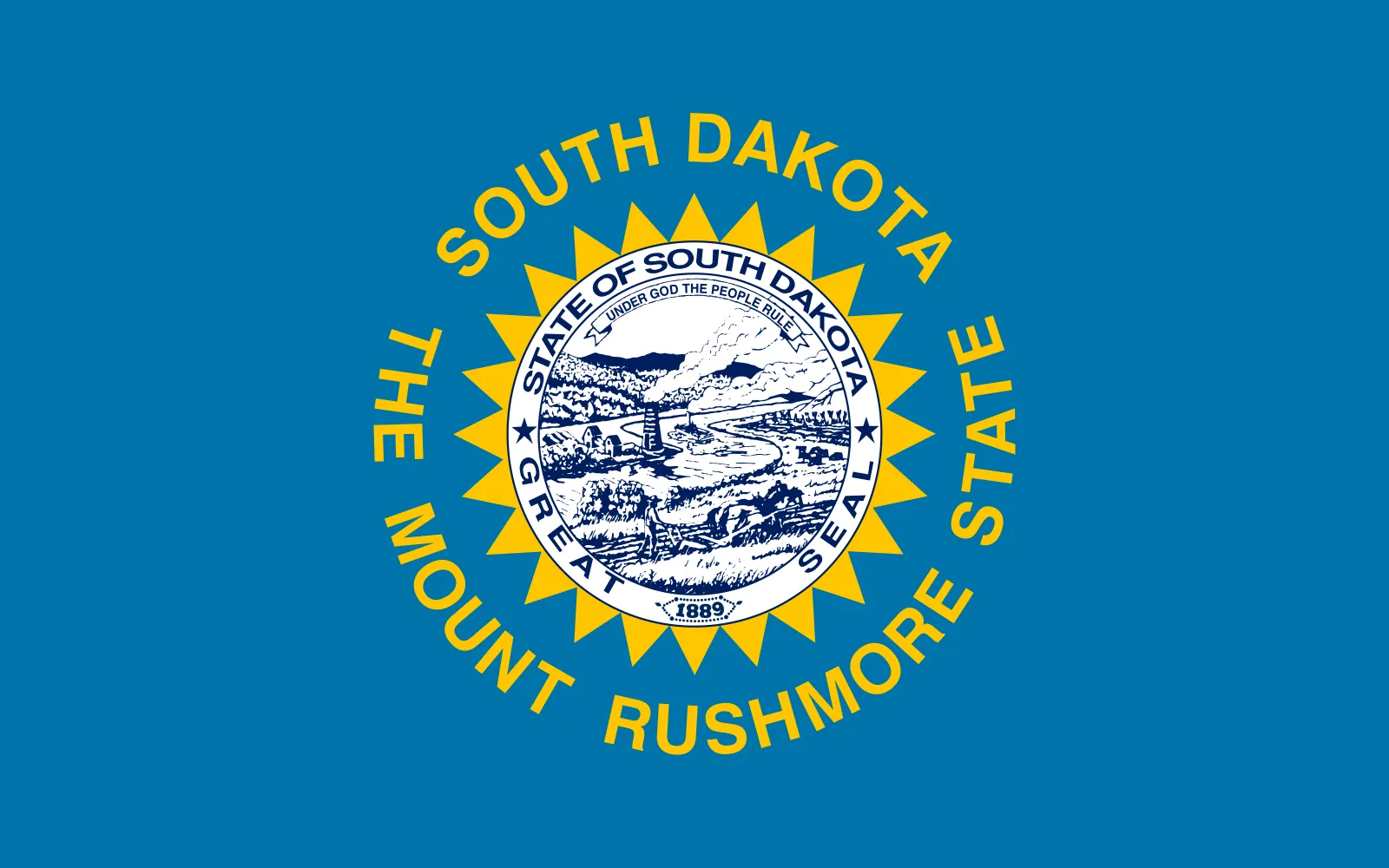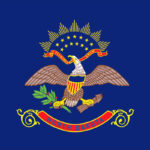Understanding the Purpose of Security Deposits
Security deposits are a critical component of the landlord-tenant relationship, providing protection for both parties involved. They serve as a form of financial security for landlords, safeguarding against any potential damages or unpaid rent, while also offering tenants the assurance that their deposit will be returned if they fulfill their obligations.
Overview of South Dakota Security Deposit Laws
In South Dakota, specific laws and regulations govern security deposits to ensure fair and transparent practices. Familiarity with these laws is essential for both tenants and landlords to understand their rights and responsibilities. The South Dakota Residential Landlord-Tenant Act establishes guidelines for the collection, maintenance, and return of security deposits.
What are the Rights and Responsibilities of Tenants and Landlords in South Dakota?
Tenants have the right to a written lease agreement that clearly outlines the terms and conditions of the security deposit. They are entitled to receive an itemized list of any deductions made from the deposit and the amount returned within a reasonable timeframe after the termination of the lease. On the other hand, landlords have the responsibility to maintain the security deposit in a separate bank account and provide proper notice if any deductions are made.
Changes in South Dakota Security Deposit Laws in 2024
As of 2024, several updates have been made to the South Dakota security deposit laws, aiming to enhance transparency and protection for tenants. These changes address critical areas such as the maximum amount of security deposit, the timeline for returning the deposit, and the documentation required.
What are the New Requirements for Security Deposits in South Dakota?
Under the updated laws, landlords are allowed to collect a maximum security deposit equivalent to one month’s rent. Furthermore, the revised legislation specifies that landlords must return the security deposit within 45 days after the termination of the tenancy, accompanied by a detailed statement of any deductions made.
How do the Updated Laws Impact Tenants and Landlords?
The updated South Dakota security deposit laws provide tenants with a clearer understanding of what to expect when it comes to their deposit. They also ensure that landlords adhere to proper procedures regarding the collection, maintenance, and return of security deposits. These changes promote fair practices and help prevent potential disputes between tenants and landlords.
Important Considerations for Security Deposits in South Dakota
Both landlords and tenants should be aware of the factors that can impact the deductions from the security deposit. South Dakota law allows landlords to deduct amounts for unpaid rent, damages beyond normal wear and tear, cleaning expenses, and outstanding utility bills. Tenants should take steps to protect their security deposit, such as documenting the condition of the rental property before moving in and promptly reporting any issues to the landlord.
Best Practices for Handling Security Deposits in South Dakota
To ensure a smooth handling of security deposits, landlords should make a comprehensive move-in checklist, complete with photographs or videos, to document the property’s condition. This documentation can serve as evidence if disputes arise. landlords should return the security deposit within the specified timeframe and provide a written explanation of any deductions made, including receipts or invoices as supporting evidence.
Understanding and complying with South Dakota security deposit laws is essential for tenants and landlords alike. By staying informed about the updated regulations and adhering to best practices, both parties can maintain a fair and transparent rental experience.
Key takeaway:
- New requirements for security deposits: South Dakota has implemented changes to security deposit laws in 2024. It is important for both tenants and landlords to understand these new requirements to ensure compliance and protect their rights.
- Impact on tenants and landlords: The updated laws have an impact on both tenants and landlords. Tenants should be aware of their rights and responsibilities regarding security deposits, while landlords must understand their obligations in terms of documentation and return of the deposit.
- Best practices for handling security deposits: Landlords in South Dakota should document the condition of the rental property thoroughly to avoid disputes. Additionally, they should adhere to proper procedures when returning the security deposit to tenants to maintain transparency and fairness in the process.

Understanding the Purpose of Security Deposits
A security deposit is a payment made by a tenant to a landlord as a form of financial protection against any potential damages or unpaid rent. Understanding the purpose of security deposits is essential for tenants to comprehend the importance of leaving the rental property in good condition. Its primary objective is to ensure that the landlord can cover any necessary repairs or losses at the end of the lease agreement. By understanding the purpose of security deposits, tenants increase their chances of receiving their full deposit back, which not only benefits the landlord but also provides financial security for the tenants. Fun fact: In 2024, South Dakota updated its laws to provide additional protections for tenants regarding the return of their security deposits.
Overview of South Dakota Security Deposit Laws
When renting a property in South Dakota, it is crucial to have an overview of South Dakota security deposit laws. The law states that landlords can charge a maximum of one month’s rent as a security deposit, which must be returned within two weeks after the tenant moves out. Landlords are only allowed to deduct amounts for unpaid rent, property damage, or cleaning expenses. Having an understanding of the overview of South Dakota security deposit laws is essential for both landlords and tenants to ensure a fair and smooth rental experience.
John, a tenant in South Dakota, was surprised when his landlord deducted a significant amount from his security deposit for cleaning expenses. Upon reviewing the overview of South Dakota security deposit laws, he discovered that the deduction exceeded the permissible limit. John approached the landlord, citing the law, and was able to negotiate a fair refund of his deposit. This example highlights the importance of understanding and asserting your rights under South Dakota‘s security deposit laws.
What are the Rights and Responsibilities of Tenants and Landlords in South Dakota?
Tenants and landlords in South Dakota have specific rights and responsibilities outlined by the state’s security deposit laws. Both tenants and landlords in South Dakota have the right to a safe and habitable living environment, and tenants are responsible for paying rent on time and keeping the property clean and undamaged. Additionally, landlords have the responsibility to maintain the property, make necessary repairs, and return the security deposit within a specific timeframe after the lease ends. Understanding these rights and responsibilities is crucial to ensure a fair and smooth rental experience in South Dakota.
In 2020, South Dakota implemented new legislation that strengthened tenant protections and clarified landlord responsibilities. These changes include stricter guidelines for security deposit deductions, mandatory itemized statements, and increased penalties for non-compliance. The purpose of these updates is to provide tenants in South Dakota with stronger protections and ensure fair treatment in the rental market. As a result, these updated laws have been effective in reducing disputes and promoting transparency between tenants and landlords in the state of South Dakota.
Changes in South Dakota Security Deposit Laws in 2024
In 2024, South Dakota will implement changes in its security deposit laws. These changes will focus on safeguarding both landlords and tenants by establishing precise guidelines and regulations for handling security deposits. Stricter guidelines will be put in place to ensure the timely return of security deposits, along with clear definitions of permissible deductions from the deposit. Furthermore, tenants will be entitled to receive an itemized list detailing any deductions made from their deposit. These modifications aim to enhance transparency and fairness in the rental process throughout South Dakota.
What are the New Requirements for Security Deposits in South Dakota?
As of 2024, South Dakota has implemented new requirements for security deposits. Landlords are now required to:
| 1. Provide tenants with a written checklist detailing the condition of the rental property, addressing the question “What are the New Requirements for Security Deposits in South Dakota?” |
| 2. Conduct a joint inspection with the tenant before move-in and document any existing damages, ensuring tenant protection and landlord accountability. |
| 3. Hold the security deposit in a separate bank account, preventing commingling with personal funds as mandated by South Dakota’s security deposit laws. |
| 4. Return the security deposit within 14 days of the tenant moving out, along with a detailed itemized account of any deductions, complying with the new requirements for security deposits in South Dakota. |
| 5. Provide receipts or invoices for any deductions made from the security deposit, maintaining transparency and fairness. |
These new requirements aim to protect both tenants and landlords by promoting transparency and fairness in the handling of security deposits. By complying with these regulations, landlords can avoid legal disputes, and tenants can have confidence in the return of their deposit.
In a similar context, history shows that security deposit laws have evolved over time to address issues of tenant protection and landlord accountability. Across different states and jurisdictions, the goal has been to strike a balance between safeguarding the interests of both parties involved in a rental agreement. These improvements in security deposit regulations demonstrate ongoing efforts to establish clear guidelines and standards, ensuring a more equitable and reliable rental process for all parties.
How do the Updated Laws Impact Tenants and Landlords?
The updated laws regarding security deposits in South Dakota have significant implications for both tenants and landlords. Tenants can expect increased protection and transparency when it comes to their security deposits. The new laws outline specific requirements for landlords to document the condition of the rental property prior to tenancy and provide a detailed itemized list of any deductions made from the deposit. This ensures that tenants are aware of any charges and can dispute them if necessary. Landlords, on the other hand, must comply with these new regulations to avoid legal consequences. The updated laws aim to promote fair and equitable practices in the handling of security deposits.
The impact of the updated laws on tenants and landlords is considerable. Tenants now enjoy improved protection and transparency concerning their security deposits. With the new regulations in place, landlords are obligated to document the rental property’s condition before occupancy and furnish a comprehensive itemized breakdown of any deductions made from the deposit. This ensures tenants have full knowledge of any fees imposed and enables them to challenge such charges if required. On the other hand, landlords must adhere to these new provisions to escape potential legal repercussions. The objective of the updated laws is to foster fair and just practices in the management of security deposits.
The evolution of security deposit laws over time aims to address issues of fairness and accountability in landlord-tenant relationships. The implementation of strict regulations is designed to safeguard the interests of both parties involved in rental agreements by establishing clear guidelines for deposit handling and return. These laws aim to prevent exploitation and ensure transparency, thereby preventing tenants from being unfairly burdened with excessive charges and holding landlords accountable for their actions. By consistently updating and refining these laws, lawmakers strive to maintain a balanced and harmonious rental market in South Dakota.
The impact of the updated laws on tenants and landlords is significant. The revised legislation provides tenants with increased protection and transparency when it comes to their security deposits. Landlords must now adhere to specific requirements, including documenting the rental property’s condition before a tenancy begins and providing a detailed, itemized list of any deductions from the deposit. This ensures tenants have full awareness of any charges and the ability to dispute them if necessary. Landlords, on the other hand, need to comply with these new regulations to avoid potential legal consequences. The objective of the updated laws is to foster fair and equitable practices in the handling of security deposits.
The continuous evolution of security deposit laws addresses issues of fairness and accountability in the relationship between tenants and landlords. By implementing stringent regulations, the aim is to protect both parties involved in rental agreements by establishing clear guidelines for handling and returning security deposits. These laws seek to prevent any misuse and promote transparency, ensuring tenants are not unfairly burdened with excessive charges while landlords are held responsible for their actions. Through consistent updates and refinements, legislators strive to maintain a balanced and harmonious rental market in South Dakota.
Important Considerations for Security Deposits in South Dakota
Important Considerations for Security Deposits in South Dakota
When it comes to security deposits in South Dakota, it is crucial to keep a few important considerations in mind. Understanding the legal requirements for the maximum deposit amount, the time frame for returning the deposit, and the allowable deductions are key factors to consider. Additionally, documenting the condition of the rental property before move-in and after move-out is essential to avoid any potential disputes. Tenants should also be fully aware of their rights and responsibilities in relation to security deposits. By prioritizing these important considerations, both landlords and tenants can ensure a smooth and fair process when dealing with security deposits.
What Can Landlords Deduct from the Security Deposit?
What Can Landlords Deduct from the Security Deposit?
When it comes to security deposits in South Dakota, landlords have the right to deduct certain expenses from the deposit. Here are some things that landlords can deduct:
- Unpaid rent or fees
- Repair costs for damages beyond normal wear and tear
- Cleaning expenses if the property was left excessively dirty
- Replacements or repairs for damaged or missing items listed in the rental agreement
- Outstanding utility bills or other agreed-upon charges
Landlords must provide an itemized list of deductions along with any remaining deposit within a specific timeframe. It’s important for tenants to review their rental agreements and communicate with landlords to ensure a fair resolution.
What Steps Should Tenants Take to Protect Their Security Deposit?
What Steps Should Tenants Take to Protect Their Security Deposit?
To safeguard their security deposit, tenants in South Dakota should consider the following important actions:
- Prior to moving in, tenants should document the condition of the rental property, making note of any existing damages or issues.
- To promptly address any maintenance or repair needs, tenants should communicate with the landlord in writing.
- It is advisable for tenants to retain copies of all correspondence with the landlord, such as emails, letters, or text messages.
- To provide evidence of the rental unit’s condition, tenants should capture pictures or videos before moving out.
- Before returning the keys to the landlord, tenants should perform a thorough cleaning of the unit.
- Tenants should request a move-out inspection with the presence of the landlord to resolve any concerns or disputes about the property’s condition.
By adhering to these steps, tenants can effectively safeguard their security deposit and minimize the risk of unwarranted deductions for damages they are not liable for.
Best Practices for Handling Security Deposits in South Dakota
When handling security deposits in South Dakota, it is important to adhere to best practices to ensure compliance and protect both landlords and tenants.
- One of the best practices is to thoroughly document the condition of the rental unit before the tenant moves in, including taking photos or videos.
- To establish clear communication, it is crucial to inform tenants about the terms and conditions of the security deposit, including any potential deductions.
- In accordance with South Dakota law, it is mandatory to store security deposits in a separate bank account. Landlords should provide tenants with the necessary account information.
- Conducting appropriate inspections and documenting any damages or issues that arise during the tenancy is another important best practice.
- After the tenant moves out, landlords must return the security deposit within the legal timeframe and provide a detailed itemized list of any deductions that have been made.
A real-life example illustrates the effectiveness of these best practices. A landlord in South Dakota followed them conscientiously, promptly returning the security deposit to a tenant. This not only increased trust but also maintained a positive landlord-tenant relationship, ultimately leading the tenant to renew their lease for another year.
How Should Landlords Document the Condition of the Rental Property?
How Should Landlords Document the Condition of the Rental Property?
Landlords should document the condition of their rental property for proper record-keeping and to protect themselves and their tenants. Here are some steps they can take:
- Perform a thorough initial inspection of the property before the tenant moves in.
- Create a detailed inventory checklist noting the condition of each room and its contents.
- Take photographs or videos of the property, highlighting any existing damages or issues.
- Document any repairs or maintenance done during the tenant’s occupancy.
- Encourage tenants to report any damages or issues promptly and document their complaints or requests.
- Conduct regular inspections at agreed-upon intervals and document any changes in the property’s condition.
By following these steps, landlords can accurately assess the condition of the rental property and handle any disputes regarding the security deposit more effectively. It also helps in fostering transparency and maintaining a good landlord-tenant relationship.
How Should Landlords Return the Security Deposit to Tenants?
- How Should Landlords Return the Security Deposit to Tenants? Returning the security deposit to tenants is an important responsibility for landlords.
- Here are some steps they should follow:
- Inspect the rental property for damages and compare it to the move-in condition.
- Document any deductions that will be made from the security deposit for repairs or cleaning.
- Calculate the total amount to be deducted and provide an itemized list of deductions.
- Send a written notice to the tenant along with the itemized list and refund check within the required timeframe.
- Keep copies of all communication and documentation related to the security deposit return.
Some Facts About South Dakota Security Deposit Laws: What’s new in 2024:
- ✅ Landlords in South Dakota are recommended to collect a security deposit from tenants to protect themselves in case of damages or unpaid rent. (Source: buildium.com)
- ✅ South Dakota residential leases generally require a security deposit, usually up to one month’s rent, but landlords can charge more if there are special conditions that pose a danger to the premises. (Source: buildium.com)
- ✅ Landlords are not required to provide a receipt for the security deposit, but it is advisable to do so. (Source: buildium.com)
- ✅ The security deposit can be used for unpaid rent, damages beyond normal wear and tear, and other lease agreement breaches. (Source: buildium.com)
- ✅ Landlords must return the security deposit (minus any cleaning or repair costs) to the renter within two weeks after they move out. (Source: buildium.com)
Frequently Asked Questions
1. What are the security deposit rules for residential leases in South Dakota?
South Dakota residential leases generally require a security deposit, usually up to one month’s rent, but landlords can charge more if there are special conditions that pose a danger to the premises.
2. Can landlords charge additional fees for damages or unpaid rent?
Yes, landlords can use the security deposit to cover unpaid rent, damages beyond normal wear and tear, and other breaches of the lease agreement.
3. When should landlords return the security deposit to the tenant?
Landlords must return the security deposit (minus any cleaning or repair costs) to the renter within two weeks after they move out.
4. Is there a requirement for landlords to provide an itemized statement of deductions?
Yes, landlords must provide an itemized statement of deductions from the security deposit within 45 days of the tenant moving out.
5. Can landlords store the security deposit in any location?
There are no specific requirements for where the security deposit should be stored in South Dakota.
6. Should landlords provide a receipt for the security deposit?
Although not required by law, it is advisable for landlords to provide a receipt for the security deposit to ensure transparency.
Dave is a seasoned real estate investor with over 12 years of experience in the industry. Specializing in single-family residential real estate, David’s strategic approach combines market analysis, financial acumen, and a deep understanding of urban development trends to maximize investment returns.










